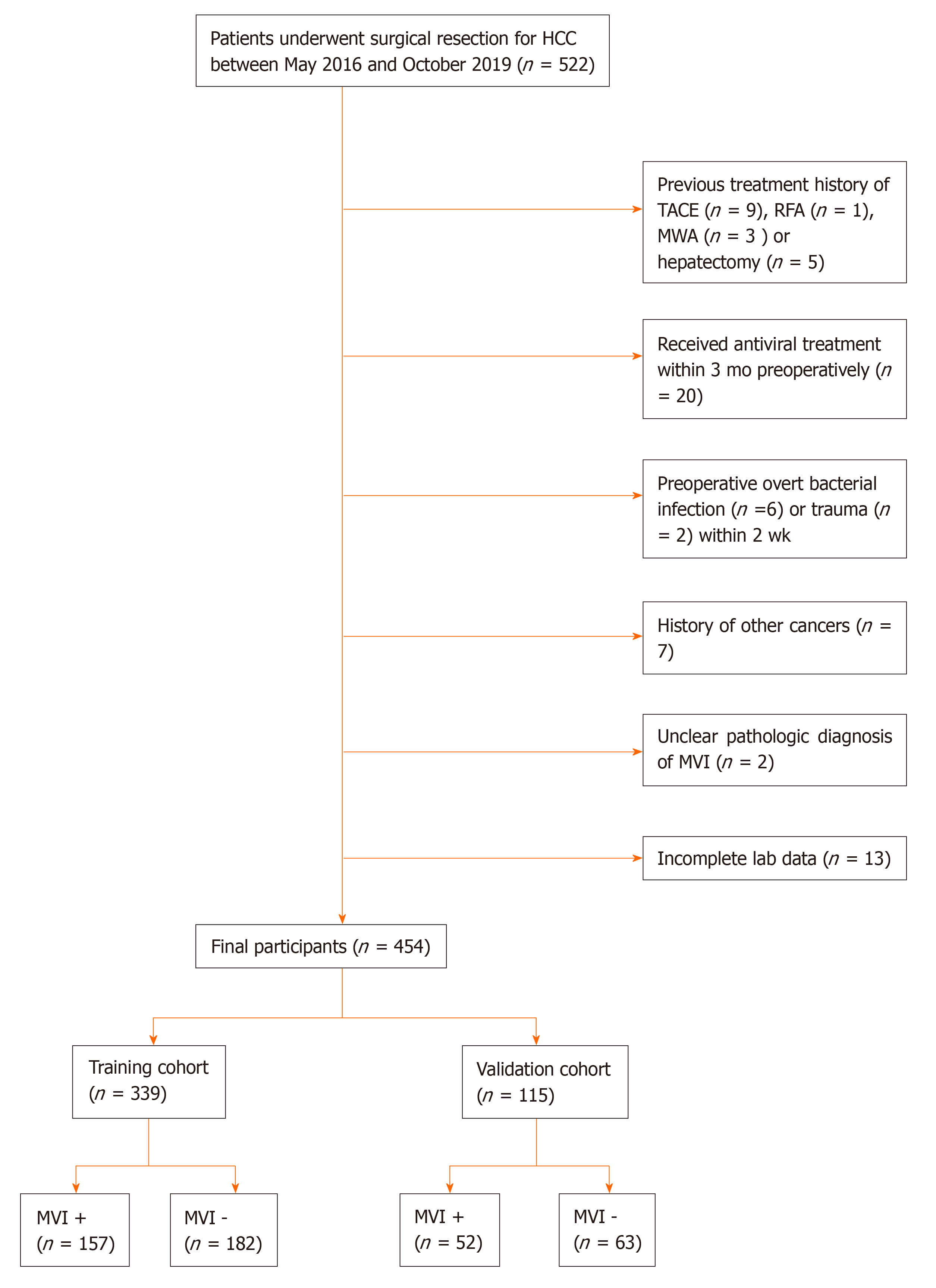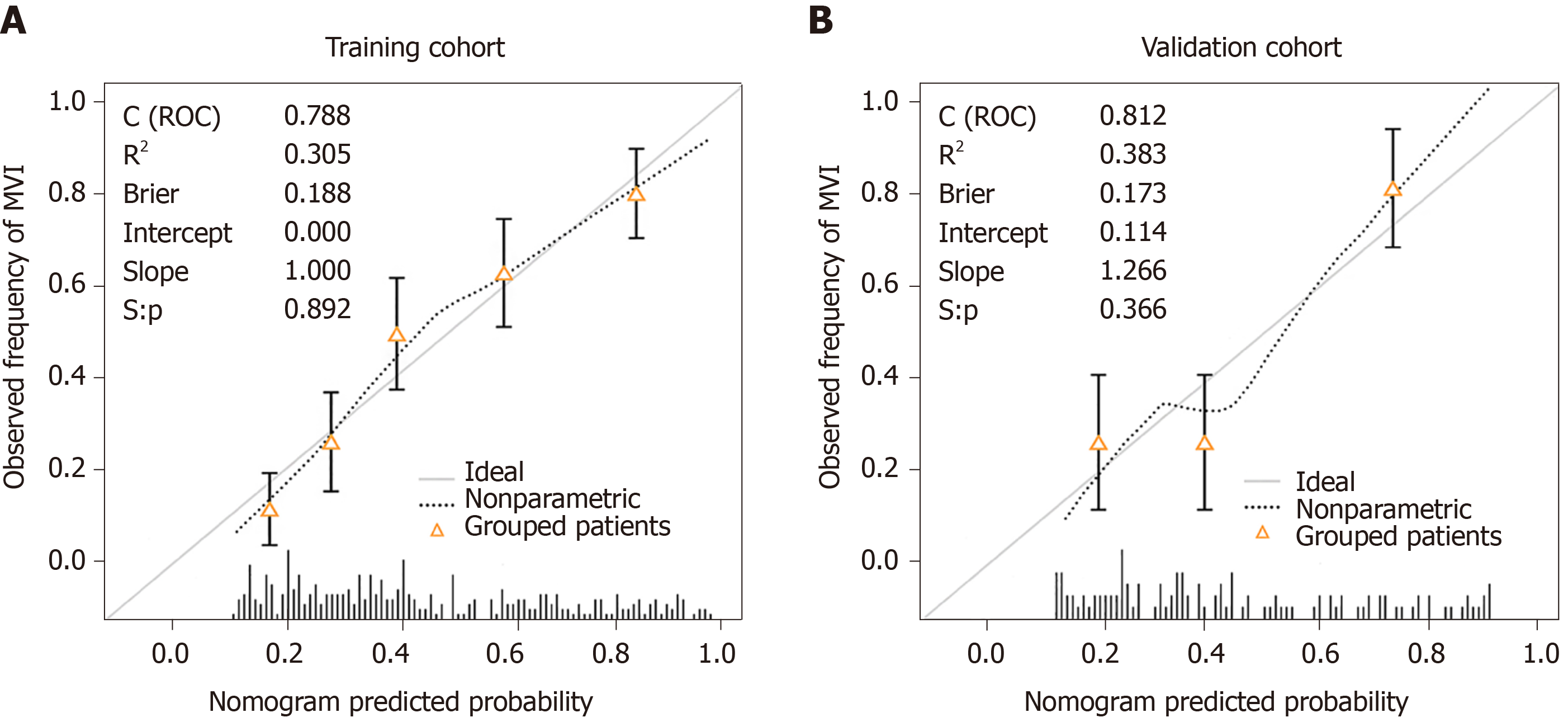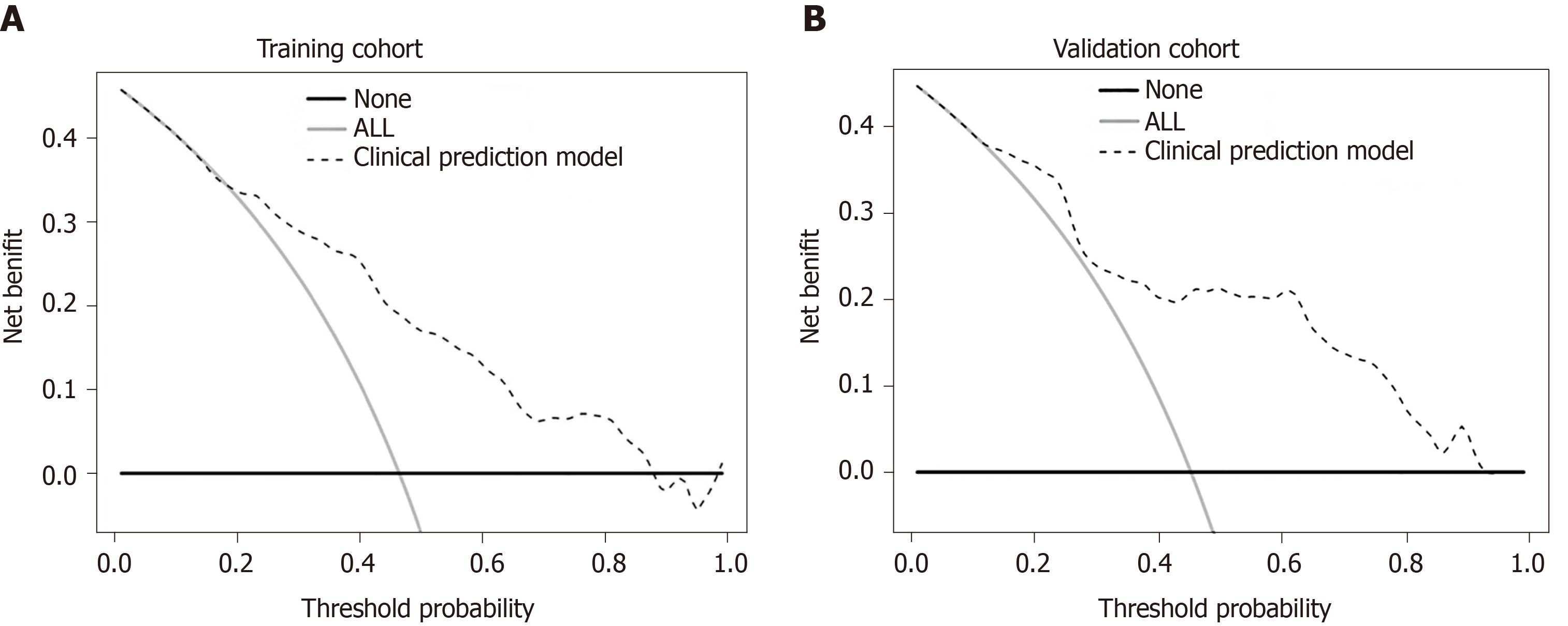Copyright
©The Author(s) 2020.
World J Gastroenterol. Apr 14, 2020; 26(14): 1647-1659
Published online Apr 14, 2020. doi: 10.3748/wjg.v26.i14.1647
Published online Apr 14, 2020. doi: 10.3748/wjg.v26.i14.1647
Figure 1 Flow chart of the study population.
HCC: Hepatocellular carcinoma; TACE: Transcatheter arterial chemoembolization; RFA: Radiofrequency ablation; MWA: Microwave ablation; MVI: Microvascular invasion.
Figure 2 Nomogram for predicting the presence of microvascular invasion preoperatively in patients with hepatocellular carcinoma.
When using the nomogram, find the position of each variable on the axis and the corresponding point vertically. Then, add the points of all variables, and determine the prediction probability of microvascular invasion on the bottom axis. AFP: α-fetoprotein; MVI: Microvascular invasion.
Figure 3 Calibration curves of the clinical prediction model.
A: Calibration plot for predicting microvascular invasion in the training cohort; B: Calibration plot for predicting microvascular invasion in the validation cohort.
Figure 4 Decision curve analysis for the prediction model.
The gray and black lines indicate patients that were microvascular invasion (MVI) positive or negative, respectively. The dashed line represents the net benefit of the nomogram at different threshold probabilities. The net clinical benefit was calculated as the true-positive rate minus the weighted false-positive rate. A: Decision curve analysis for MVI in the training cohort; B: Decision curve analysis for MVI in the validation cohort.
- Citation: Wang L, Jin YX, Ji YZ, Mu Y, Zhang SC, Pan SY. Development and validation of a prediction model for microvascular invasion in hepatocellular carcinoma. World J Gastroenterol 2020; 26(14): 1647-1659
- URL: https://www.wjgnet.com/1007-9327/full/v26/i14/1647.htm
- DOI: https://dx.doi.org/10.3748/wjg.v26.i14.1647
















